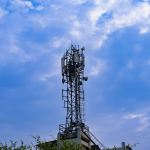VIEWPOINT
5G is a massive opportunity for carriers to accelerate economic growth in the post-COVID era. However, carriers must invest in the infrastructure to move beyond 5G to 5.5G to boost economic growth across all industry sectors.
As per the GSMA estimates 5G will represent 600 billion in terms of additional GDP value to the global economy, translating to approximately 1% of GDP. By the end of March this year, 38 carriers had launched commercial 5G Standalone (SA) networks and another 14 are likely to do so by the end of the year. Asia Pacific region is leading the development of 5G SA with the region accounting for 50% of all launches globally. China, along with other countries in the region, like South Korea and Japan, have taken the lead in deploying 5G SA.
As the 5G ecosystem continues to strengthen, there is an emerging need to improve its capabilities to address the evolving requirements. This is all the more crucial as the vision for 6G has only been finalized recently and the technology is still a decade away from commercialization.
“Today, increasingly diverse requirements across different scenarios are calling for technological innovations based on 5G. This is where 5.5G comes in. So, 5.5G is like a bridge between 5G and 6G,” says Yang Chaobin, Director and President of ICT Products and Solutions at Huawei, during a recent interview with Pau Castells, Head of Economic Analysis at GSMA Intelligence.
“Requirements from many customers in many industry scenarios are becoming clearer. For example, 10-gigabit speeds, greatly improved downlink capabilities, and emerging IoT technologies. All of these requirements must be satisfied in the 5.5G era, rather than waiting for the 6G era,” adds Yang Chaobin while emphasizing the growing need for 5.5G.
Defining the value of 5.5G for operators
5G Non-Standalone (NSA) allowed the service providers to quickly launch 5G services and this is one of the key reasons 5G has become the fastest-ever mobile generational change in the world. Since the launch of 5G technology four years back, it will have more than 1 billion connections globally by the end of the year.
Now the first stage of the 5G rollout is complete in several countries and it is paving the way for the next stage, 5G SA and 5G-Advanced, which requires the service providers to deploy a new dedicated 5G core network along with more advanced protocols. “Our global mobile survey of operators indicates that 20% of operators worldwide have already begun 5G standalone deployments and 80% of them will be beginning these deployments in the next three years,” says Pau Castells.
The network transformation required to transition from 5G NSA to 5G SA is required to ensure the delivery of the true benefits of 5G. “The reality is that it is crucial to deliver the true benefits of 5G in terms of latency, networks, licensing, IoT support, and all these really will enable new use cases that can be transformational, particularly for the enterprise sector,” adds Pau Castells.
5G Advanced will enable several groundbreaking 5G use cases like connected robots and connected drones in manufacturing, which are not possible with 5G NSA. This will help the carriers delight their users by providing advanced 5G use cases, leading to improved 5G monetization.
5.5G will allow service providers to ensure better uplink capabilities leading to improved customer experience. “Thanks to the network experience being 10 times better, consumers can enjoy faster network speed. The great improvement of uplink speeds also means significantly higher efficiency for consumers in a live webcast and AI application scenarios. In B2B scenarios, enterprises and industries have much larger uplink data traffic than downlink data traffic, says Yang Chaobin.
5.5G is also required to address the growing number of IoT devices. “In 5.5G, we will define RedCap, passive IoT, and other IoT technologies, increasing the number of wireless connections from 10 billion to 100 billion and presenting operators with even more business opportunities,” says Yang Chaobin.
Enabling 10 Gbit/s experience
One of the key capabilities of 5.5G is that it enables a 10 Gbit/s experience, further allowing the service providers to provide exceptional customer experience.
A key element of delivering 10 Gbit experience is the spectrum. “There are mainly two new frequency bands: 6 GHz and mmWave. How can we make them work effectively with Sub-6 GHz that operators currently use? This is a key element for achieving 10 Gbit/s experience. Based on Huawei’s technical verification, if we use the 400 M band with 6 GHz, we can reach 10 Gbit/s. It is technically feasible to use the large bandwidth of mmWave to provide a downlink rate of 10 Gbit/s,” explains Yang Chaobin.
In the 5.5G era, carriers need to combine the large bandwidth capabilities of 6 GHz and mmWave with the frequency bands within Sub-6 GHz. This will allow the service providers to ensure both wide coverage and 10 Gbit/s experience. 5.5G also helps carriers address the uplink weakness of 5G with solutions like Supplementary Uplink (SUL).
5G and 5.5G are the key enablers of digital transformation and will spur investment and economic growth. There is a strong linkage between ICT investments and generating employment and productivity, consequently, economic growth. “GSMA Intelligence conducted economic research that finds that over a 20-year period, on average, a 10% increase in mobile adoption increased GDP by 1%, with the effect increasing by approximately 15% when connections upgrade from one mobile generation to the other, so from 2G to 3G, from 3G to 4G, and now from 4G to 5G. As a result of that, approximately about 7% of all the global GDP growth that we have seen over the last 20 years can be actually attributed to the role and the eruption of mobile and mobile broadband,” says Pau Castells.
As the 5G ecosystem continues to mature, the time is now right for the telcos to invest in 5.5G to fast-track the economic growth in all industry verticals, from manufacturing to retail to automotive. Providing true 5G use cases and realizing the IoT potential along with delivering a 10Gbit experience is possible only with 5.5G. The industry must promote the wider adoption of 5.5G.
Reference resource: https://impact.economist.com/projects/driving-the-digital-economy/

















